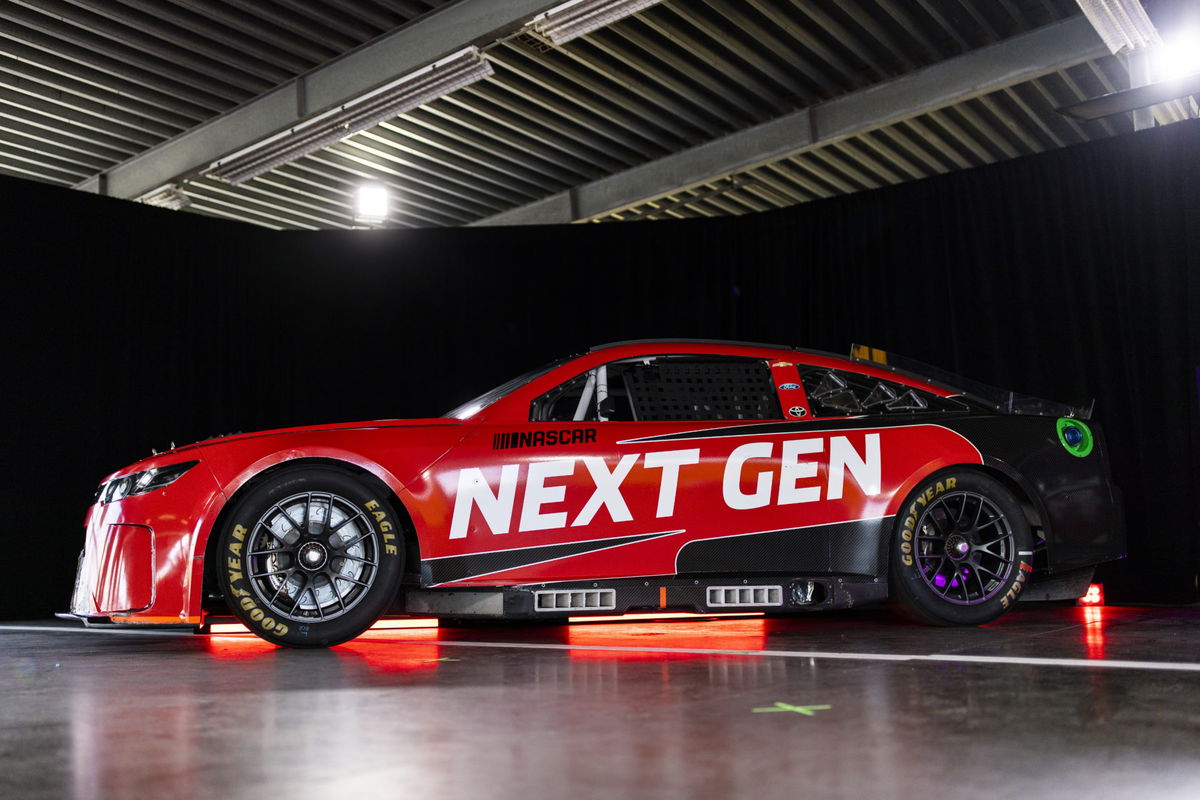
Getty
DAYTONA BEACH, FLORIDA – JANUARY 12: A NASCAR Next Gen model sits on display in the garage during the NASCAR Next Gen Test at Daytona International Speedway on January 12, 2022 in Daytona Beach, Florida. (Photo by James Gilbert/Getty Images)

Getty
DAYTONA BEACH, FLORIDA – JANUARY 12: A NASCAR Next Gen model sits on display in the garage during the NASCAR Next Gen Test at Daytona International Speedway on January 12, 2022 in Daytona Beach, Florida. (Photo by James Gilbert/Getty Images)
With the NextGen car’s introduction in 2022 came the promises of a more equal racing product, a concept most have come to know as ‘parity.’ However, with echoes ringing loud of a declining racing product, courtesy of controversial deciding calls like the one made for Ricky Stenhouse Jr’s 75,000-dollar All-Star punishment, Coupled with a similar reception of the Gen 7 machines’ third-year advances as the ‘Great Aerodynamic Equalizer,’ the question on many lips has been: do these leveling changes even hold any benefits for the collective in the long run?
Watch What’s Trending Now!
That question hangs in the balance, just like the objections surrounding a consistently similar race-day experience on almost every other racetrack but the mile-and-a-halfs. Like the one surrounding calls for a bump in the engine output from drivers like Denny Hamlin themselves. Or even the dark clouds looming above some heavily scrutinized judgment calls of late that leave NASCAR cleaning up the blushes more often than not.
ADVERTISEMENT
NASCAR’s struggle for consistency in the ‘parity’ illusion
Parity was ideated by the sanctioning body to cancel out any undue advantages and provide more level playing for all 36 point-paying teams fighting for a race win every weekend. It aims to find a balance for smaller often one-car chartered entries such as Chevrolet-backed JTG Daugherty Racing, the team fielding Stenhouse Jr’s #47 spot, against bigger multi-car entries of RCR, his sparring buddy Kyle Busch’s team.
As Kyle Busch duly mentioned right after their now-viral scuffle in North Wilkesboro, “I s*ck as bad as you.” Although a statement made purely in the heat of the moment, it stands truer than ever in the current scenarios facing the broader NASCAR spectrum. First, considering RCR’s own declining fortunes since the glory days of the ‘80s & ‘90s, they too have been unable to make a mark on the Cup Series champion’s circle, similar to their lesser-accomplished and much-newer counterparts like JTG Daugherty.
Second, the overall incident, in all fairness, has revealed the need for some competitive horsepower off the track. Much is owed to the collective outcry stemming from no issued fines or suspension for Busch in his part to play, leading to the ensuing fracas following his aggressive moves on Stenhouse Jr on the very first laps. As it happens, replays of the all-important incident that left Busch mad enough to push the #47 Chevy’s rear into the outer wall now indicate minimal involvement from its driver leading up to his misfortunes.
ADVERTISEMENT
Many major voices, including Denny Hamlin and Kyle Busch’s other North Wilkesboro victim, Ty Gibbs, “hoped” to see Stenhouse Jr retaliate after Busch took him out of the running for the All-Star prize last Sunday. A chance at a million dollars could’ve gone a reasonable distance in helping his much smaller race team secure at least 1000 pairs of Goodyear slicks for their future advances.
As Dale Jr recently explained in a recent episode of The Download, “On the other side, you got Kyle Busch that we know he wrecked him on purpose and he gets nothing. I’m fine with him getting nothing if Ricky’s side was a little more reasonable. For Ricky’s side to be this big mountain of a penalty and Kyle’s to be nothing was a little surprising.”
ADVERTISEMENT
NEWS: Ricky Stenhouse Jr. has been fined $75,000 for violating the NASCAR Member Code of Conduct at @NWBSpeedway.
Additionally, four-race and eight-race suspensions have been issued to two crew members of the No. 47 team. pic.twitter.com/mMySkJjR5u
— NASCAR (@NASCAR) May 22, 2024
Moreover, the 2024 NASCAR season’s dominance by Tier 1 teams made a non-points entry in the exclusive 20-car field for the million-dollar All-Star price highly coveted for JTG Daugherty. Stenhouse Jr likely contemplated this thought, right before he launched his fiery right hook on Busch after waiting by his trailer for 198 tense laps. However, NASCAR’s post-race penalties seemingly overlooked this point. They issued a hefty $75,000 fine and suspensions to members of Stenhouse’s entourage, including his father, while Busch walked away scot-free despite initiating the incident to the greatest extent.
This brought in calls of favoritism and bias played by the sanctioning body, with the global NASCAR community loudly in disapproval. As most will know by now, RCR’s former ‘Candyman‘ Kyle Busch and his Rowdy personality have helped the sport and all the teams he has driven for boost numbers and sponsorship opportunities alongside his own illustrious career. Hence, many fans believe drivers like Kyle Busch have received a hush-hush advantage straight from NASCAR during their unfortunate encounters over the years.
ADVERTISEMENT
#NASCAR‘s Elton Sawyer on why Ricky @StenhouseJr was fined $75,000 for his post-race altercation with @KyleBusch at @NWBSpeedway.
🗣️ “There could have different decisions made.”
More → https://t.co/MKhd9eLXG8 pic.twitter.com/tsDdlNmmWZ
— SiriusXM NASCAR Radio (Ch. 90) (@SiriusXMNASCAR) May 22, 2024
But as NASCAR explained to the general audience through their Senior VP of Competition, Elton Sawyer in a recent statement on SiriusXM NASCAR radio, “I think it’s fair to say that when you have crew members and family members that put their hands on our drivers, we’re going to react.” On the other hand, considering NASCAR’s 76-year history, many other brawls arguably deserved harsher penalties than the largest fine ever issued for fighting, courtesy of Stenhouse Jr.’s single punch on Busch.
Top Stories
“I’d Be Dead”: NASCAR Legend Credits Kevin Harvick for Saving His Life
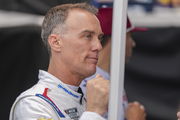
Exclusive: Catching Up With ‘The Dinger’ — the Past, Present and Future of AJ Allmendinger

“I’m Worried” – Ross Chastain Confesses Fears of Triggering Michael Jordan’s Lawsuit Wrath With Humble 3-Word Claim
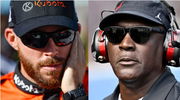
Historic NASCAR Track to Change Its Iconic Name as City Council Moves to Auction It Up
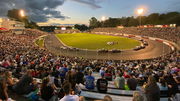
Chaotic Brawl Breaks Out at Tulsa Shootout After Teen Flips Off Rival Driver
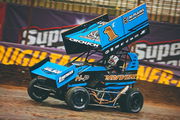
ADVERTISEMENT
Is the penalty system rigged for marketability?
The Busch brothers had been known to harbor flaring tempers brought to many right out of the deserts of Nevada in their younger years. From elder brother Kurt snapping over the radio for various concerns specific to himself during his career to Kyle emerging as the villain for NASCAR in his pre-RCR years racing in the Cup, it is safe to say they have etched their own signature Rowdy brand of controversy through the last two decades and more.
Due to the effects, driver entries more often than not, erupt in boos for Busch, despite his claim to a top spot among the winningest active drivers in NASCAR history. Speaking of claims, owing to Busch’s public appeal as the resident villain, some declare that Busch seemingly receiving free passes for his marketability is only the result of a necessity in viral products and fabricated narratives to drive viewers to the excitement the world’s premier stock car racing experience warrants.

Imago
March 13, 2017 – Las Vegas, Nevada, United States of America – March 12, 2017 – Las Vegas, Nevada, USA: Kyle Busch (18) walks away after a confrontation with Joey Logano (22) after the Kobalt 400 at Las Vegas Motor Speedway in Las Vegas, Nevada. NASCAR Motorsport USA 2017: Monster Energy Cup Series Kobalt 400 Mar 12 – ZUMAa161 20170313_zaa_a161_012 Copyright: xWalterxGxArcexSrxAspxIncx
Image Credits: Imago
Add to that his sometimes suspicious repercussions, like that time at Las Vegas in 2017 when then-JGR driver Busch pulled out a punch of his own on Team Penske’s Joey Logano after a last-lap collision. This led to a full-blown brawl between crew members of the #22 and the #18 and a bloody forehead for KFB, but although the aesthetics of the situation seemed worse in turn for the people involved, NASCAR issued no penalties, drawing the ire of many.
ADVERTISEMENT
Similarly, Ross Chastain and Noah Gragson’s dustup at Kansas last season in May also went unchecked with Elton Sawyer stating at the time: “When you feel like your day hasn’t gone the way that you had hoped it would, and someone had impacted that with a way you’re not happy with, you’re going to show your displeasure.”
Contrarily, when notorious Kyle Busch and Kevin Harvick tangled on pit road at Darlington in 2011, NASCAR docked both drivers 25,000 dollars and put them on probation. But with a touch of karmic irony, it was yet again Kyle Busch on the receiving end of a haymaker from the hands of Happy Harvick himself that brought about a conditional release. One can notice two trends emerge from these recent happenings managed and recovered by NASCAR.
ADVERTISEMENT
One is Kyle Busch’s knack for getting himself into fistfights with his fellow competitors. And two. NASCAR’s whimsical inconsistency in passing crucial judgments after controversial moments such as the one in North Wilkesboro has often put the sport in a bad light.
But more importantly, the blurred lines of equality pursuing a more on-par and balanced racing product on-track seem to have lost their balancing factor off the track, with NASCAR’s visible imparity in its decision-making process.
ADVERTISEMENT
ADVERTISEMENT
ADVERTISEMENT

